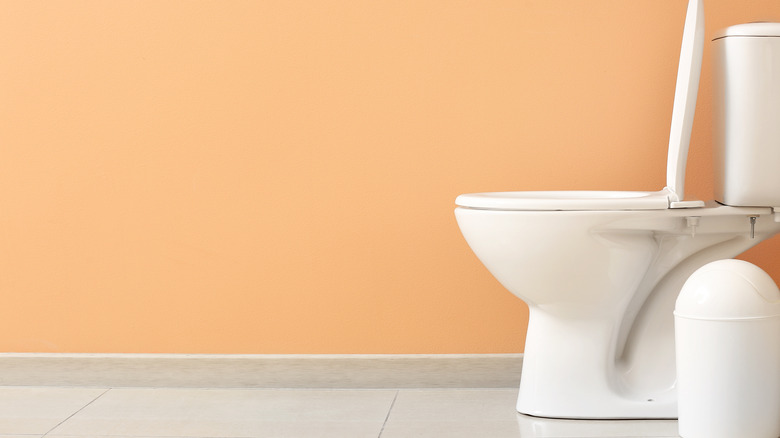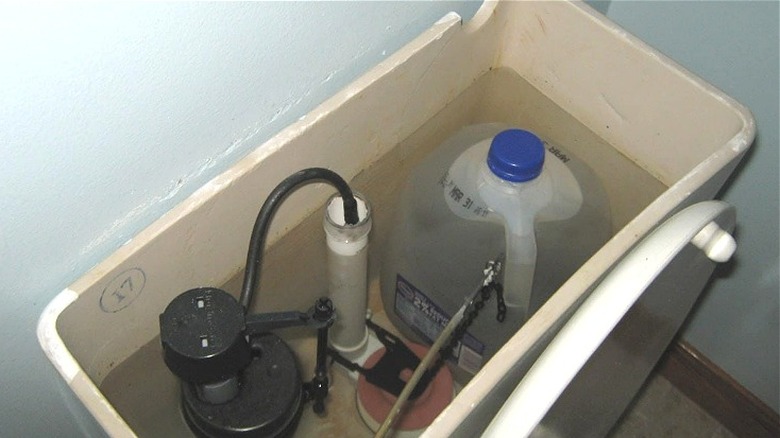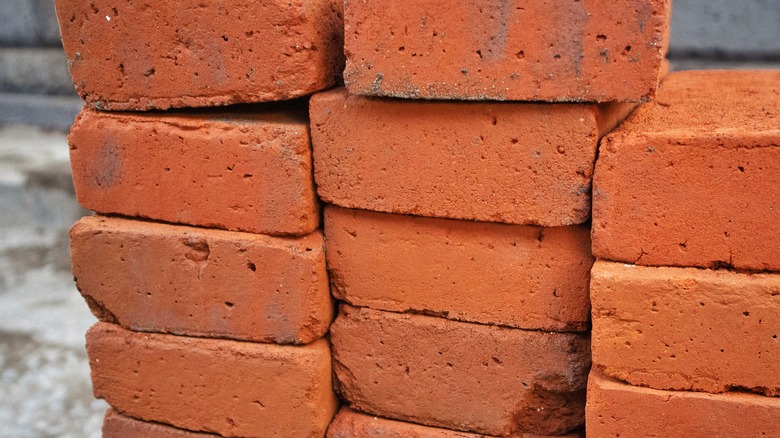Save Water By Placing A Bottle In Your Toilet Tank
Older homes that still use toilets made prior to 1992 can consume up to 7 gallons per flush. Aside from replacing your older porcelain throne completely (which is also the most eco-friendly option), one way to save water and money is by placing a weighted-down water bottle in the toilet tank. This can reduce the amount of water flushed with each use. In the past, other heavy objects — like bricks — were often supplemented. In 1992, new water regulations were introduced that required all toilets to use 1.6 gallons per flush or less. Modern-day toilets only use around 1.28 gallons.
Keep in mind that if you have a modern toilet with a 1.6-gallon stamp on it, you should not use this method. The design of the toilet's pipework relies on the water in the bowl to create a seal against the sewage system it connects to. If the water level is lowered too much, there is a risk of breaking this seal and experiencing a rather unpleasant odor in the bathroom.
Opt for a plastic bottle or glass jar
To save water in your toilet, you can use a plastic 2-liter bottle filled with water and weighed down with rocks, marbles, or glass pebbles. Start by removing the label from the bottle and cleaning it thoroughly. Then, fill the bottle most of the way and add your weights. These will prevent the bottle from floating around freely and potentially interfering with the flushing mechanism or damaging the internal parts. To keep the water inside the bottle from getting funky, add a drop or two of bleach. Tightly screw on the cap and carefully position the bottle in the tank so that it won't interfere with the flushing mechanism. It's important to periodically check the tank to ensure that the bottle remains in its intended position.
Glass jars can also be used as an alternative to plastic bottles. However, if a glass jar accidentally breaks in the toilet tank, you're going to have to engage in some deep, deep cleaning.
Steer clear of bricks
In the past, using a regular brick was a common solution to prevent your toilet from completely filling. However, it is no longer advisable to use a brick in your toilet tank to conserve water, as it can potentially cause damage to your plumbing system. Bricks are not designed to be submerged in water for extended periods and will quickly begin to disintegrate. Loose particles and sediment can interfere with the fill valve and other internal components, including the flush mechanism.
If you're still contemplating using a brick, consider opting for an alternative that won't deteriorate when submerged in water. Eco-friendly rubber bricks are designed with a rubber casing and a special eco-gel that expands once it makes contact with water, displacing around a ½ gallon. Utilizing environmentally conscious products like these can lead to water savings of approximately 2 gallons per person per day.


